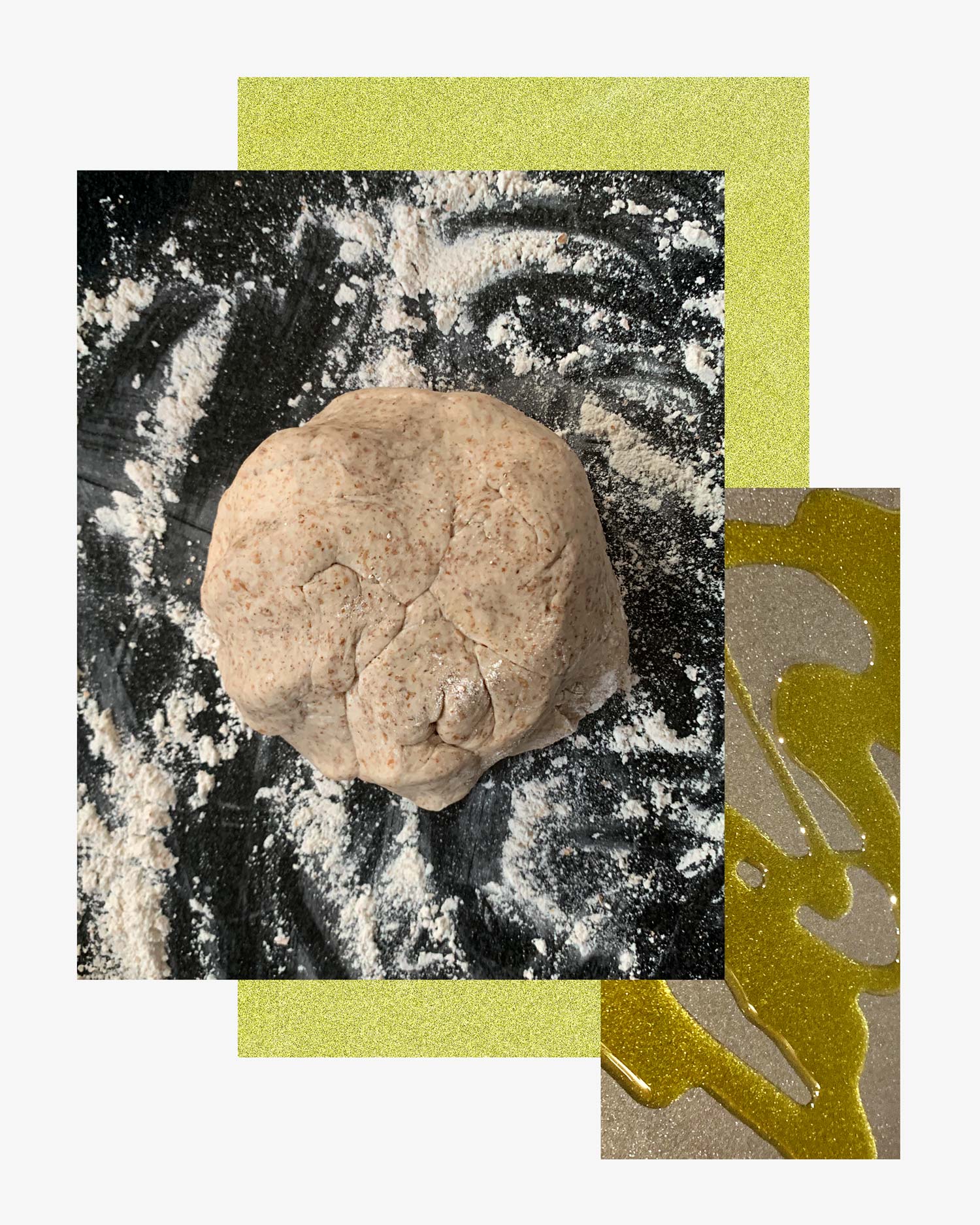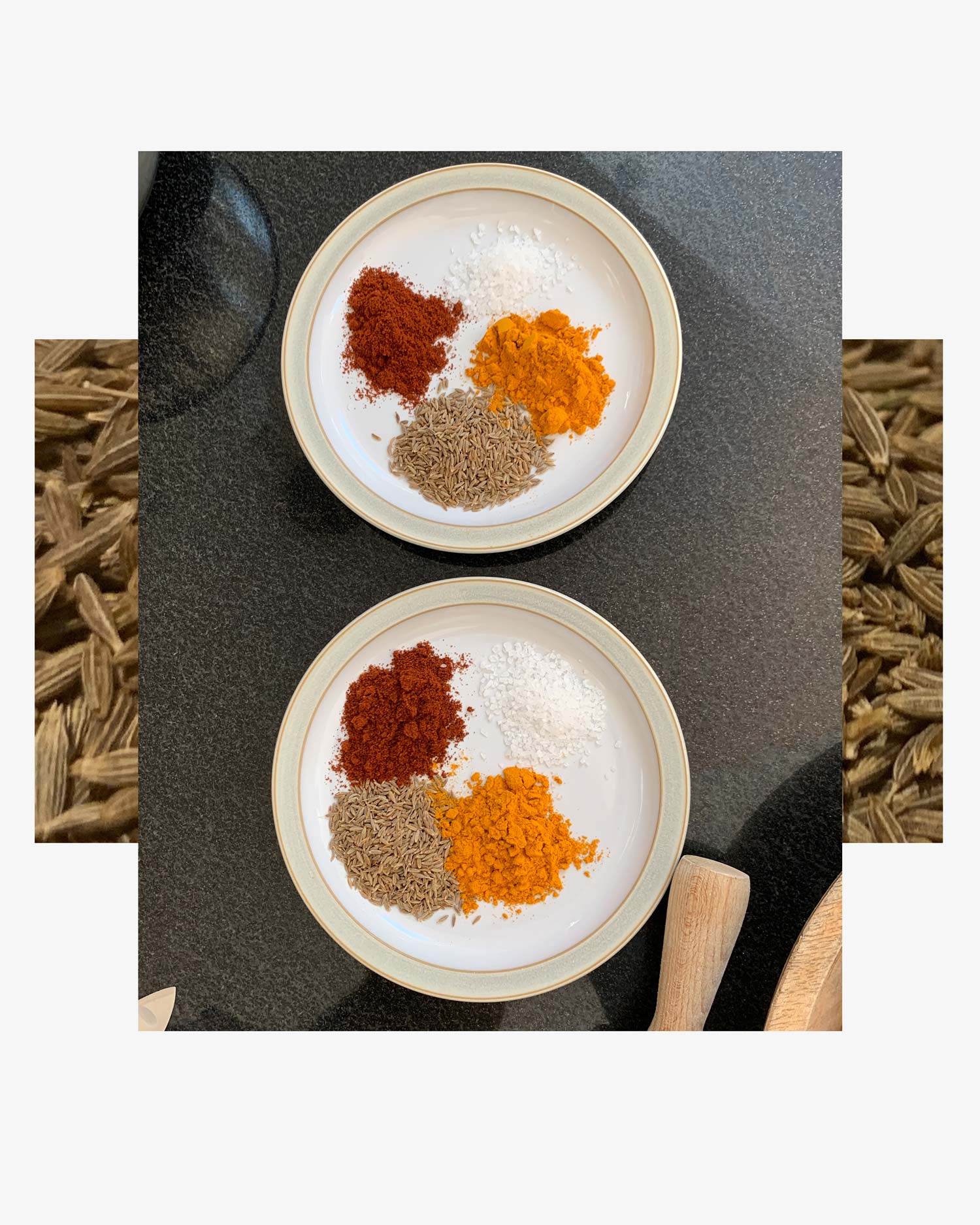
A Family Affair:
Comfort Foods With Priya Ahluwalia
Who better to take us on a culinary journey than menswear designer Priya Ahluwalia, whose Indian-Nigerian heritage infuses each of her collections. Calling her grandmother via FaceTime, Priya and her nana show us how to whip up a mouth-watering Indian meal. Read on to learn more about Britain’s standout sustainability star and her unique attitude to ingredients (both in the kitchen and in her work.)
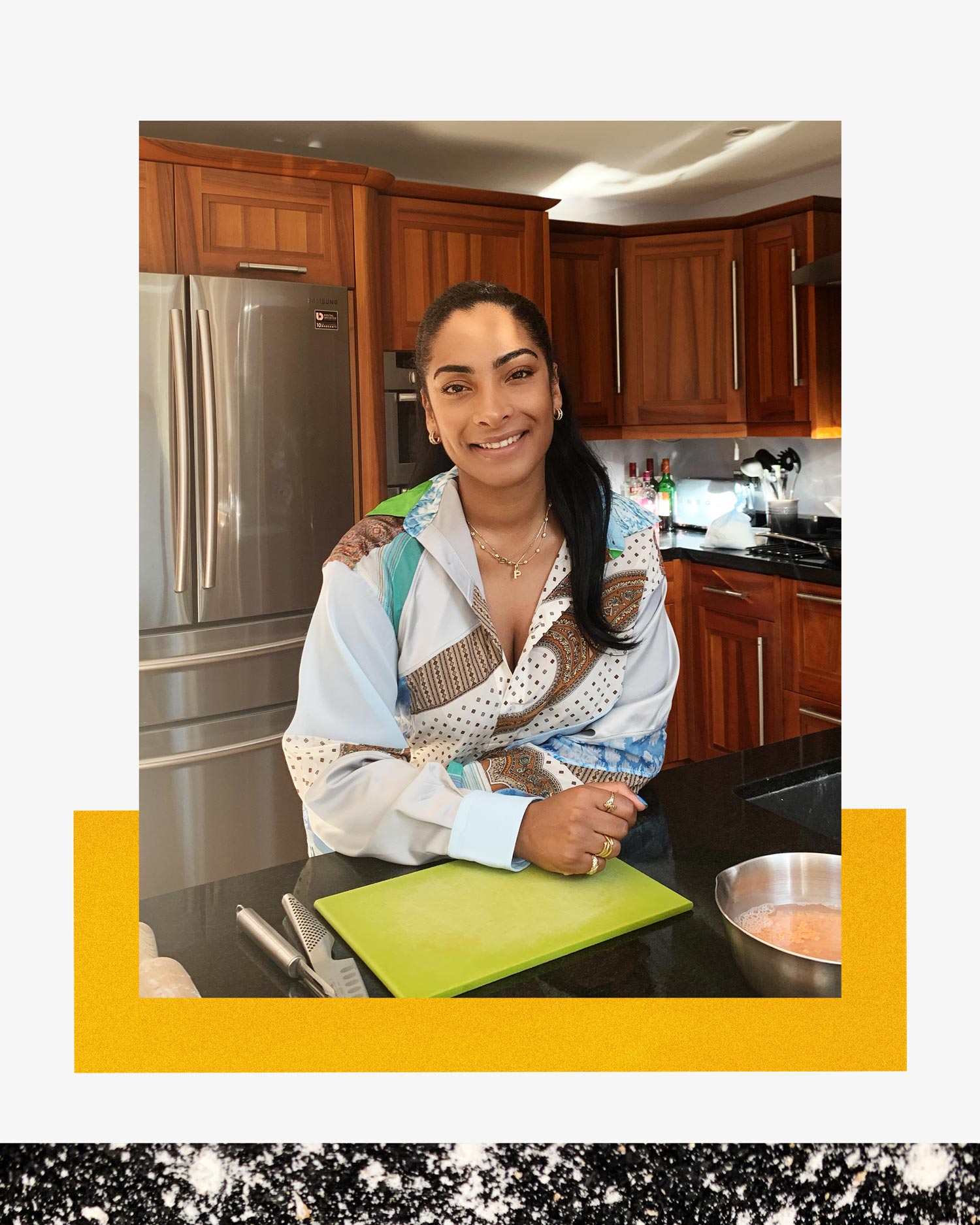
Vegetable Saabji
Ingredients:
2 potatoes
5 carrots
1 onion
150g frozen peas
1 tsp salt
½ -1 tsp hot red chilli powder
1 tsp garam masala
2 tsp cumin Seeds (Jeera)
2 tsp turmeric powder (Haldi)
2 tbsp oil
Method:
Finely dice the onion and set aside. Peel the carrot and chop into small, even pieces about 1.5cm in width. Peel the potatoes and chop into even pieces - slightly larger than the carrot pieces. Wash the potatoes and carrots (the moisture from washing is handy for later on.)
Add vegetable oil to a hot pan and fry the onions until they start to go clear. Add the jeera and mix. Cook until golden brown. Add salt, chilli, turmeric and garam masala and mix all the ingredients for around 1.5 minutes. Add the potatoes and carrots and mix it all together.
Turn the cooker down and place a lid on for around 30 minutes. Stir halfway through to make sure the onions and spices are evenly distributed. If at any point you think it is getting too dry, add a tablespoon of water or some extra oil.
Once the potatoes and carrots are nearly cooked, add the peas, gently stir, put the lid back on and leave to cook for a further 2-3 minutes.
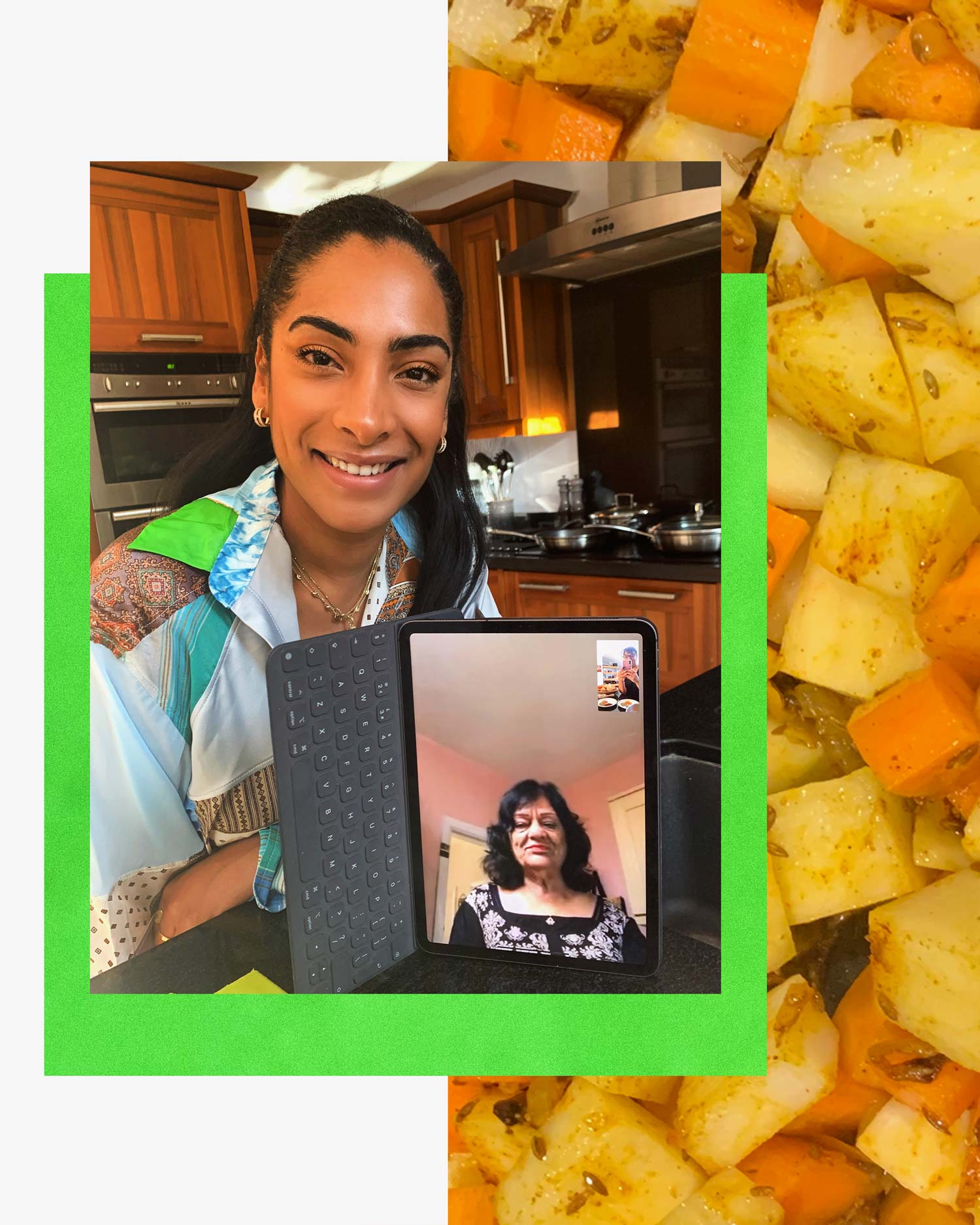
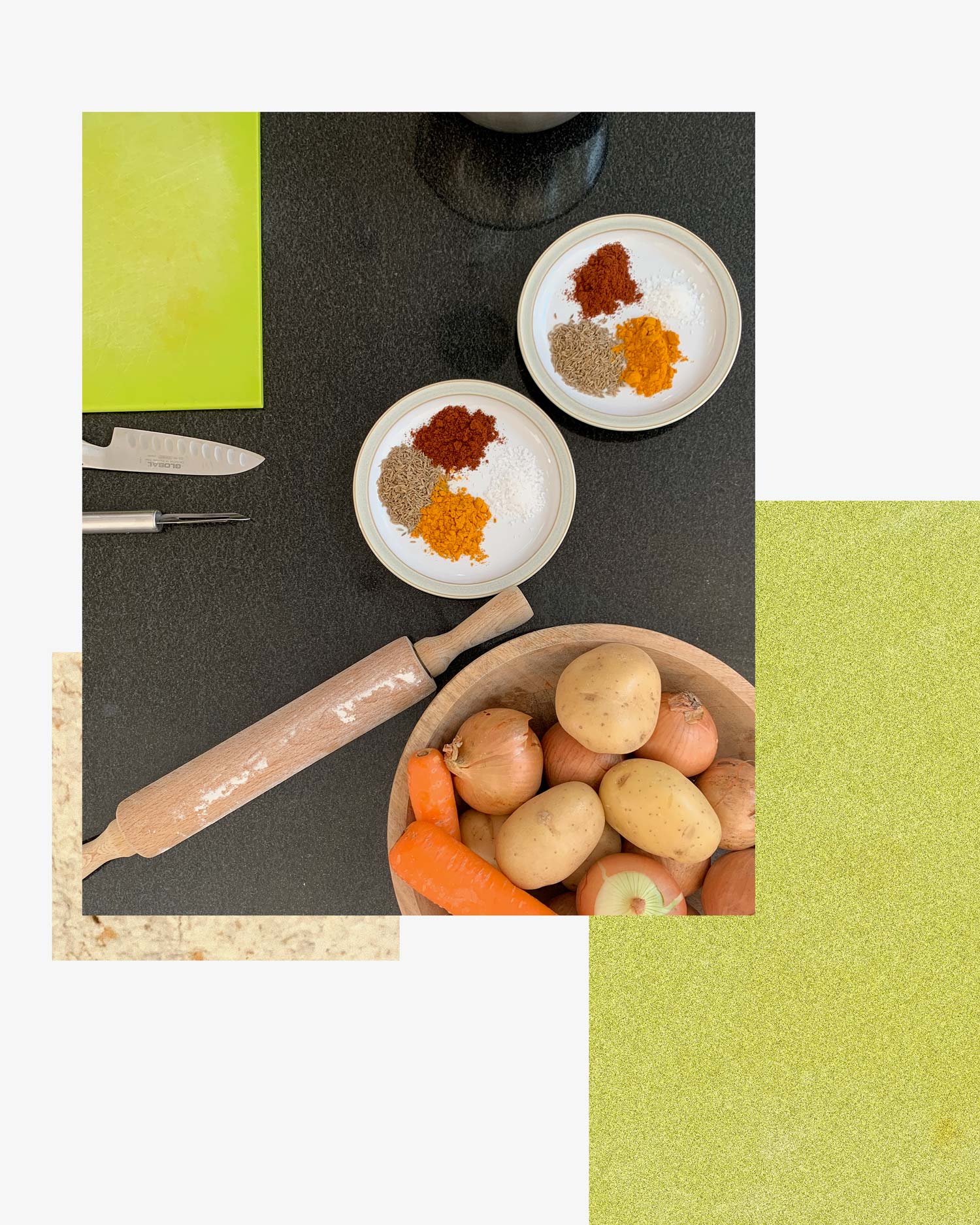
Yellow Daal
Ingredients:
1 cup of lentil daal
3 cups of water
1 onion
2 tbsp oil
1 tsp salt
½ -1 tsp hot red chilli powder
1 tsp turmeric powder (Haldi)
2 tsp cumin seeds (Jeera)
½ tsp garam masala
2 tsp dried fenugreek leaves
Method:
Wash the daal thoroughly and leave to soak for 2 hours.
Dice the onions very finely. Add vegetable oil to a hot pan and fry the onions until they start to go clear. Add the jeera and mix. Cook until dark brown. Add salt, chilli, turmeric and garam masala and mix all the ingredients for around 1.5 minutes.
Drain the daal and add to pan with the 3 cups of water. Simmer for around 25 minutes. You’ll know it’s cooked when the water is no longer separated from the lentils. Add 2 tsp of dried fenugreek leaves and gently mix. Cook for a further 2 minutes.
Rotis
Ingredients:
2 cups of chapati flour
¾ cup of water
1 tsp of oil
Butter
A rolling pin
A chapati pan
Method:
Slowly add water to the chapati flour and knead into a dough. Drizzle some oil on top of the dough to prevent shrinkage. Place into an airtight container and put in the fridge for two hours.
When the saabji and daal is nearly cooked, take the roti dough (atta) out of the fridge. Put some chapati flour in a small dish and sprinkle some flour on the countertop. Take a golf ball size amount of dough and roll it into a ball before pushing into a disk using your hands. Dip the dough into the dish with the flour and begin to roll out with a rolling pin into an even circle.
Put the roti onto a hot chapati pan and cook on one side. Push the roti onto the pan with a spatula. Turn to cook the other side. Once you start seeing brown circles it is cooked. Remove from the pan and add butter.
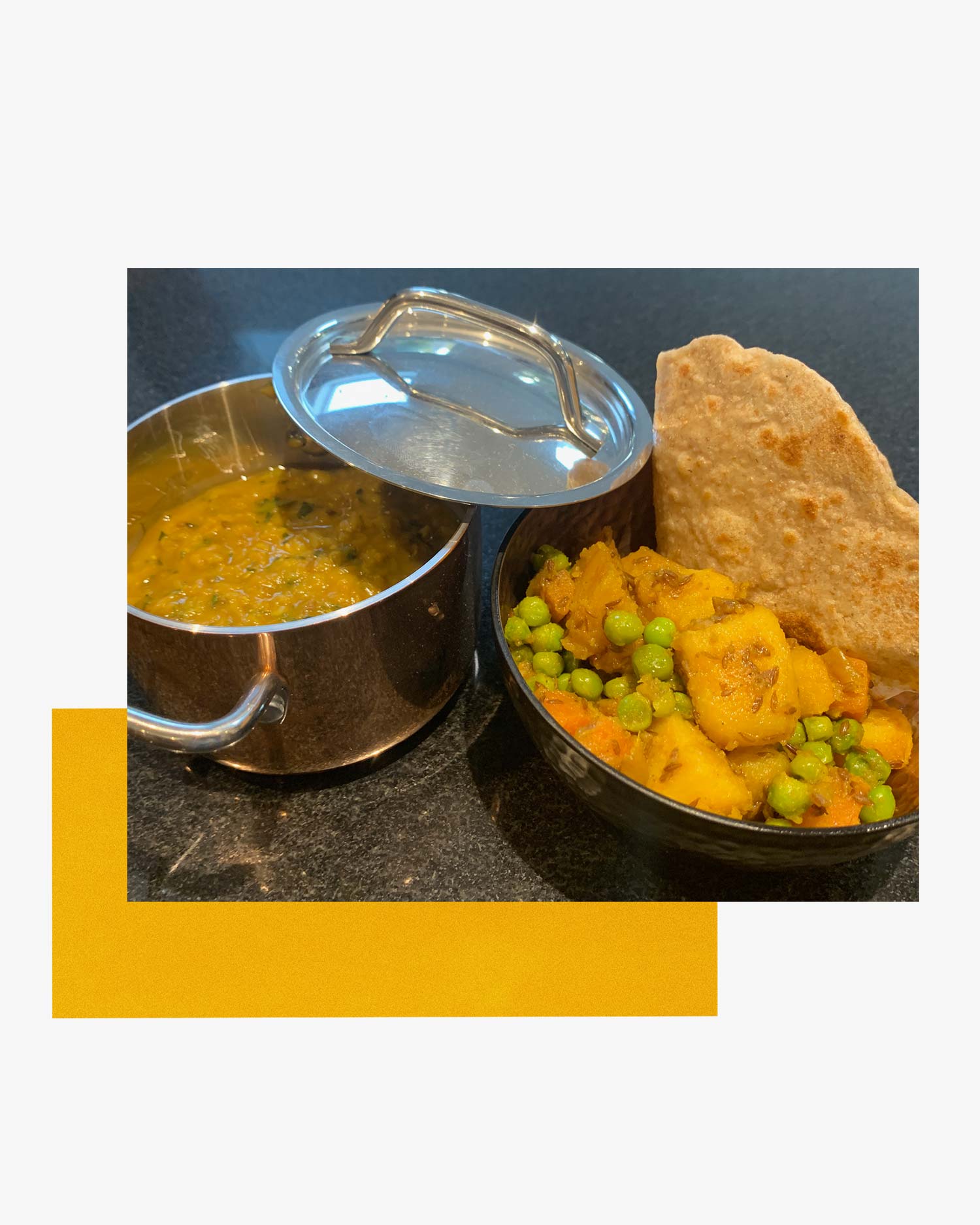
What are you making for us today?
I am making a Punjabi meal of vegetable saabji, yellow daal and rotis.
Why did you choose this dish?
I chose this dish because it's really tasty and easy to make.
Where and when did you learn to make it?
I was taught to make it by my nana - I have been doing more cooking lessons with her recently over FaceTime.
How would you describe what you do?
I am the creative director and founder of Ahluwalia, which is a brand focusing on creating modern and future-facing clothing whilst respecting heritage, culture and the environment.
How do you cook up an idea? Talk us through your creative process.
I am always reading, watching documentaries and visiting galleries, so my inspiration comes from a myriad of places. I often mix references in my work, rather than sticking to one strict narrative. On the whole, I am hugely inspired by my heritage. I am Indian and Nigerian and raised in London, and I think it gives me a unique view on things.
I’ve done so much research into the second hand clothing industry, documented in my book Sweet Lassi, and it's been life changing. I really couldn't design without considering sustainability anymore. Those thoughts on design, sustainability and heritage have manifested themselves as a part of my brand DNA.
Favourite thing to eat?
My nana's cooking.
Least favourite thing to eat?
Mushrooms! They make me shudder.
If you were a dish, what dish would you be?
Something spicy!
What would be your last meal and where?
If I could fit it all in, I would start with Aloo Parathas and black daal made by my nana, then Nigerian egusi stew with Eba. I'd finish off with a Twister Ice Lolly.
In life, what’s the best recipe for success?
Staying true to yourself and your unique outlook, taking things seriously and not seriously at the same time, some enthusiasm and some discipline.
They say that success smells sweet. What does it smell like to you?
An XL Diptyque candle in each room of your house.
Related Reading:
A Family Affair: Guest Edited By The British Fashion Council
Comfort Foods: Denai Moore
Mix It Up: Nicholas Daley And Nabihah Iqbal
The Picture Interview: Samuel Ross And Wilson Oryema
